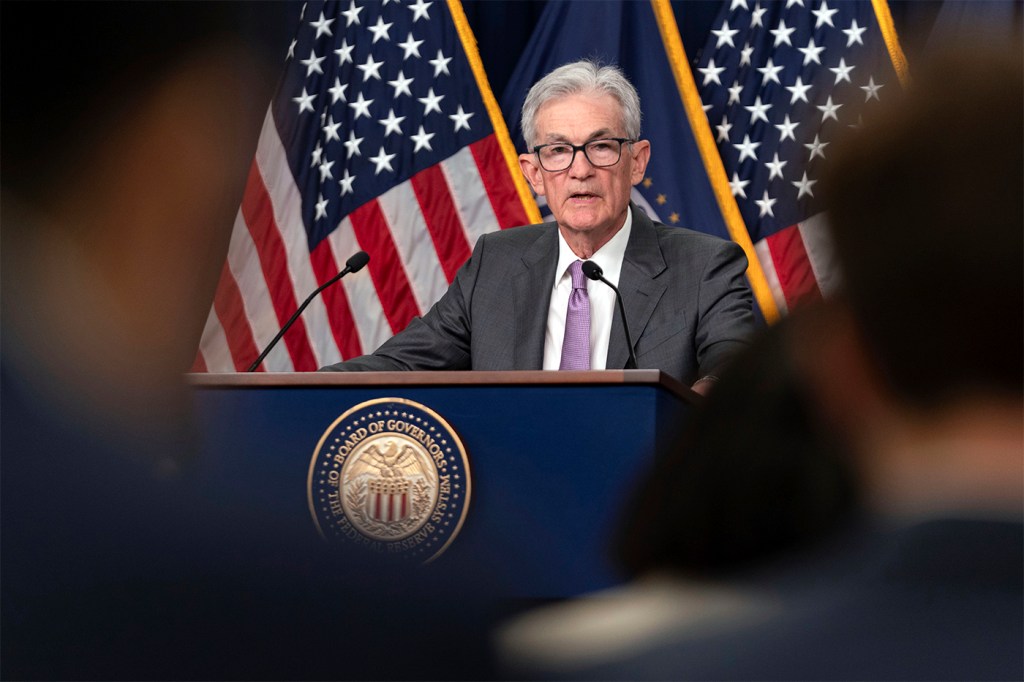Fed cuts interest rates by 0.5%. Here’s why economists say we should be focused on the long-term plan
“What’s most important is how much they plan to cut all together by the end of the year and… going into 2025,” Northeastern economist Bob Triest says.

For the first time in more than four years, the Federal Reserve on Wednesday cut its benchmark interest rate.
But Northeastern University economist Bob Triest says to focus on the Fed’s long-term outlook — not just the 0.5 percentage point cut announced today — to gauge the impact of rate cuts on the economy.
“In terms of the impact on the real economy, (whether it is a 0.5 percentage point or a 0.25 percentage point cut today) likely doesn’t really matter a lot,” says Triest, professor of economics at Northeastern.
“What’s most important is how much they plan to cut all together by the end of the year and how much they expect to continue cutting going into 2025,” he says.
The Federal Reserve sets the federal funds rate, which is the rate at which banks lend to each other on an overnight basis to make sure that they all have sufficient reserves. The federal funds rate in turn affects other interest rates such as those on Treasury notes and Treasury bonds, and the rates at which banks can offer mortgages, interest on accounts, car loans, etc.

Federal fund rates hovered just above 0% from the 2008 financial crisis until 2016, then returned to that area during the pandemic.
But since February 2022, the central bank has raised the federal funds rate by more than 5 percentage points in order to combat inflation.
Now, more than four years since the federal funds rate was last cut, and after two years of aggressive increases, the Federal Reserve announced a cut of 0.5 percentage points, leaving the federal funds rate between 4.75% and 5.0%
Editor’s Picks
The fact that the Fed cut — and the size of the cut — dominates the immediate headlines, especially after recent speculation on whether the cut would be a 0.5 percentage point or a 0.25 percentage point decrease.
Marianna Koli, associate professor of economics at Northeastern in London, says a 0.5 percentage point cut is “a more aggressive move” that communicates “a sense of urgency in getting businesses and consumers borrowing and spending again.”
On the other hand, she says a 0.25 percentage point cut would have been “a more measured move,” which could have been “followed by another cut soon after.”
But that doesn’t mean that the Fed had an easy decision.
While Triest says a .50 percentage point cut “is probably justified” based on slowing inflation, the economy slowing and there being some deterioration in the labor market, it “might cause some alarm,” in that people could interpret the move as indicative of an imminent recession.
Koli concurs.
“In the U.S., 0.5 percentage point rate cuts are quite rare, and are sometimes seen as a sign of an impending economic crisis,” Koli explains. “Therefore, the Fed committee has to think carefully about the message that’s being sent.”
But the size of Wednesday’s cut still is less interesting to Triest than the Survey of Economic Projections that the Fed will release at the end of its meeting.
Triest says it’s widely expected that the Fed will indicate in this document that it plans to cut a full percentage point by the end of the year — meaning that it will cut interest rates two more times before the new year.
Essentially, Triest says, a .50 percentage point cut was coming before the new year, whether it came Wednesday or in December would “not make a big difference.”
That being said, the impact of Wednesday’s decision on the real economy “won’t be fully felt for quite some time,” Triest says.
So, any declaration of a successful “soft landing” may be premature.
“It takes time for the Federal Reserve’s monetary policy to really have an impact, and it also takes time for this whole process of the economy slowing to really fully come to a natural conclusion,” Triest says.
Koli agrees.
“It’s always difficult to classify economic events while they are happening,” Koli says. “This decision is an action that will affect how the situation unfolds; we’ll need to see the consequences before we can say whether the U.S. managed a ‘soft landing.’”










